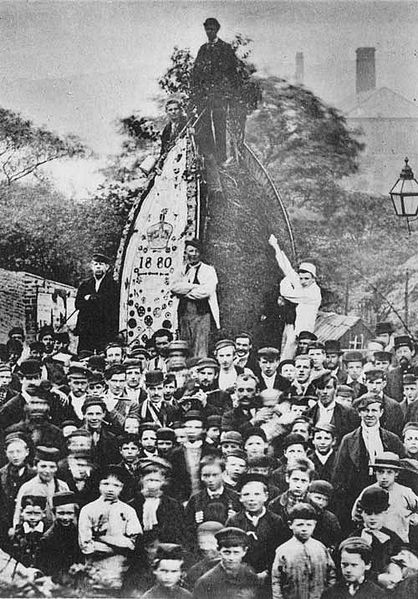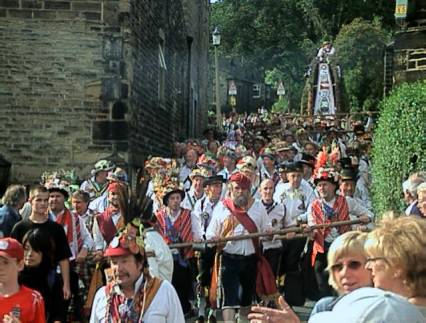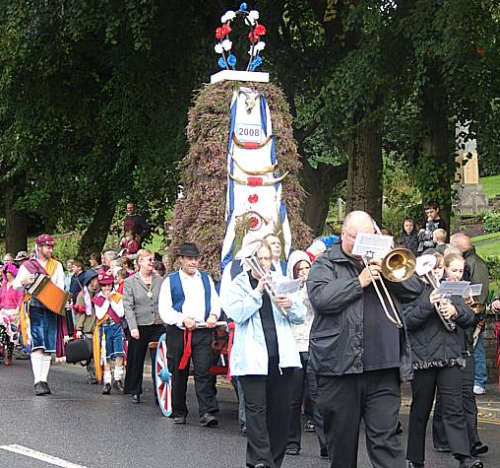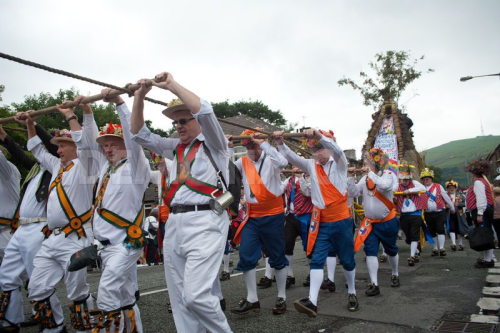|
|
Gwerincymru — o Gymru o’r byd |
|||||||||
|
By MIKE GREENWOOD
As I sit down to write, I’m starting to regain my breath following a whirlwind couple of months of a mad, hot summer’s dancing tour of Wales, England and Ireland that’s taken in Pen-Llyn, Aberystwyth, West Cork, North Yorkshire, East Lancashire and many places in-between! I’ve taken part in quite a lot of misplaced (or at least displaced) dancing, including an open-air twmpath in the middle of a new housing development in the Welsh valleys, a celebration of Border Morris (in clogs!) in the Yorkshire Dales, Welsh social dance on the Irish-speaking island of Cape Clear, a Breton fest-noz in the middle of Wiltshire, every conceivable form of folk-dance display in Yorkshire’s goth capital of Whitby and, most recently, rapper from England’s north-eastern pit villages in the urban heartland of Pennine Lancashire. In a very brief respite prior to taking off to a Cambro-Breton dance mélange in Côtes d’Armor, I’m looking back on some really exciting events and wishing we could have such fun back home in Yr Hen Wlad.
The recent rushbearing weekend in Whitworth, Lancashire holds the happiest memories for me. The collection of rushes, mixed with herbs and sweet-smelling grasses, carried from its moorland beds into town for an annual replacement of the herbaceous floor-covering in parish churches which, from mediaeval times through to the early-eighteenth century, had remained unfurnished, with floors of compacted earth, has been an occasion for ceremony and celebration since the middle-ages. And as far as records go back, the hauling of the decorated rushcart has always been accompanied by dancers and a local band. An early-nineteenth century description of one such ceremony in Glossop reads:
A pyramid of rushes, ornamented with wreaths of flowers, and surmounted with a garland, occupies the centre of the car, which is usually bestrewed with the choicest flowers that the meadows of Glossop Dale can produce, and liberally furnished with flags and streamers. Thus prepared, it is drawn through the different parts of the village, preceded by groups of dancers and a band of music. After parading the village, the car stops at the church gates, where it is dismantled of its honours. The rushes and flowers are then taken into the church and strewed amongst the pews and along the floors, and the garlands are hung up near the entrance into the chancel, in remembrance of the day. The ceremony being ended, the various parties who made up the procession retire, amidst music and dancing, to the village inn, where they spend the remainder of the day in joyous festivity.
Well, that also fairly accurately describes the time I spent in Whitworth! The rushcart is prepared and drawn by the men of Whitworth Morris whilst, armed with home-made brooms, the women-folk perform an elaborate sweeping procession before the cart, the whole cavalcade being sonorously led by members of Whitworth Vale and Healey Brass Band. Other folk-dance teams, including the celebrated Britannia Coconut Dancers of Bacup follow on, joined by local dignitaries and celebrants and, on this particular occasion, followed up by the Thwaites brewery’s horse-drawn dray, its shire-horses resplendent in all their ceremonial finery!
The weekend unfortunately coincided with the better known rushbearing festival in nearby Sowerby Bridge, whilst similar events are still held, or more accurately have been revived, in Littleborough, Newchurch-in-Pendle, Ambleside and most famously Saddleworth. But the most wonderful thing about this event is that it never fails to engage the whole community. Dancers, musicians, church-folk, civic dignitaries, and every family in the town turn out, participate, and enjoy their best day of the year. I struggle to think of any equivalent, essentially dance-based event here in Wales that engenders such complete social inclusion. Perhaps there’s something that’s lain hidden in our history books that can be revived here. Maybe the processional Morris dances associated with the cheese-fairs around Nantgarw once were part of a rushbearing ceremony. Then again, perhaps it’s just a case of the abysmal relationship that has long persisted between folk music and dance and the Church, or chapels in this part of the world, being responsible for nipping in the bud any attempt by the God-fearing public to have a good time. Still, all power to the elbow of any folk-dance archivists who might care to take up the challenge!
|
||||||||||





